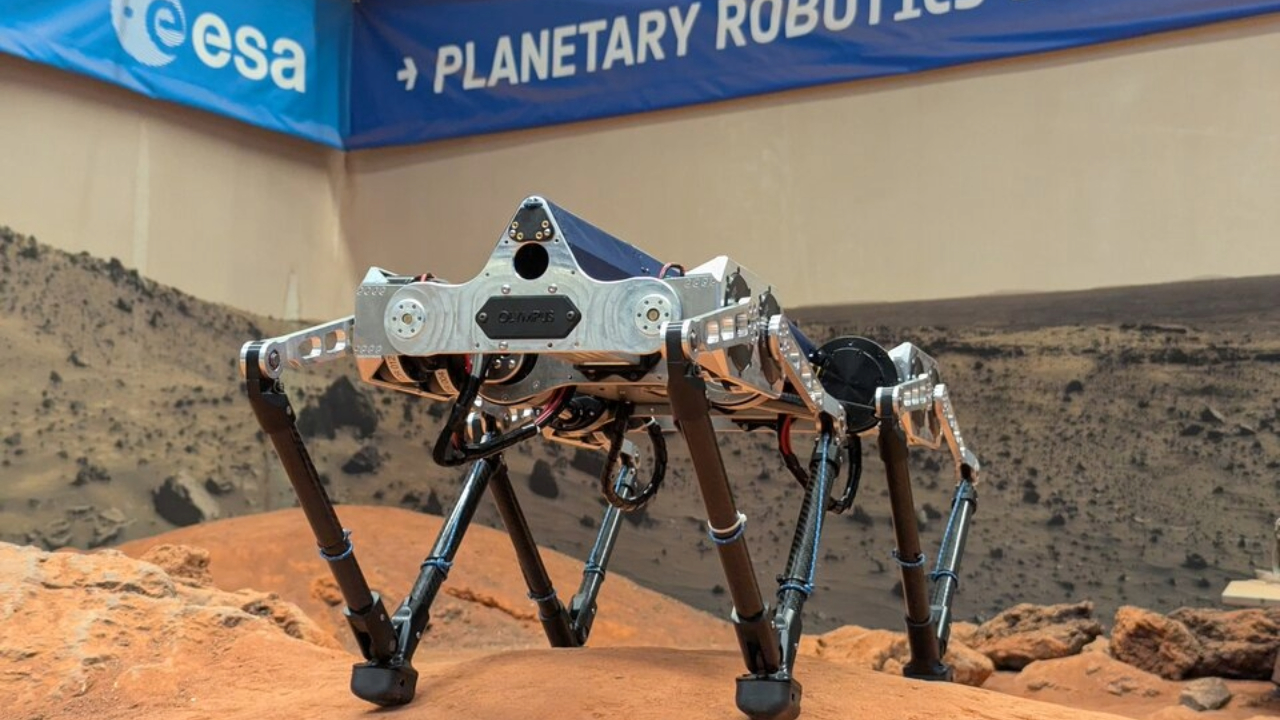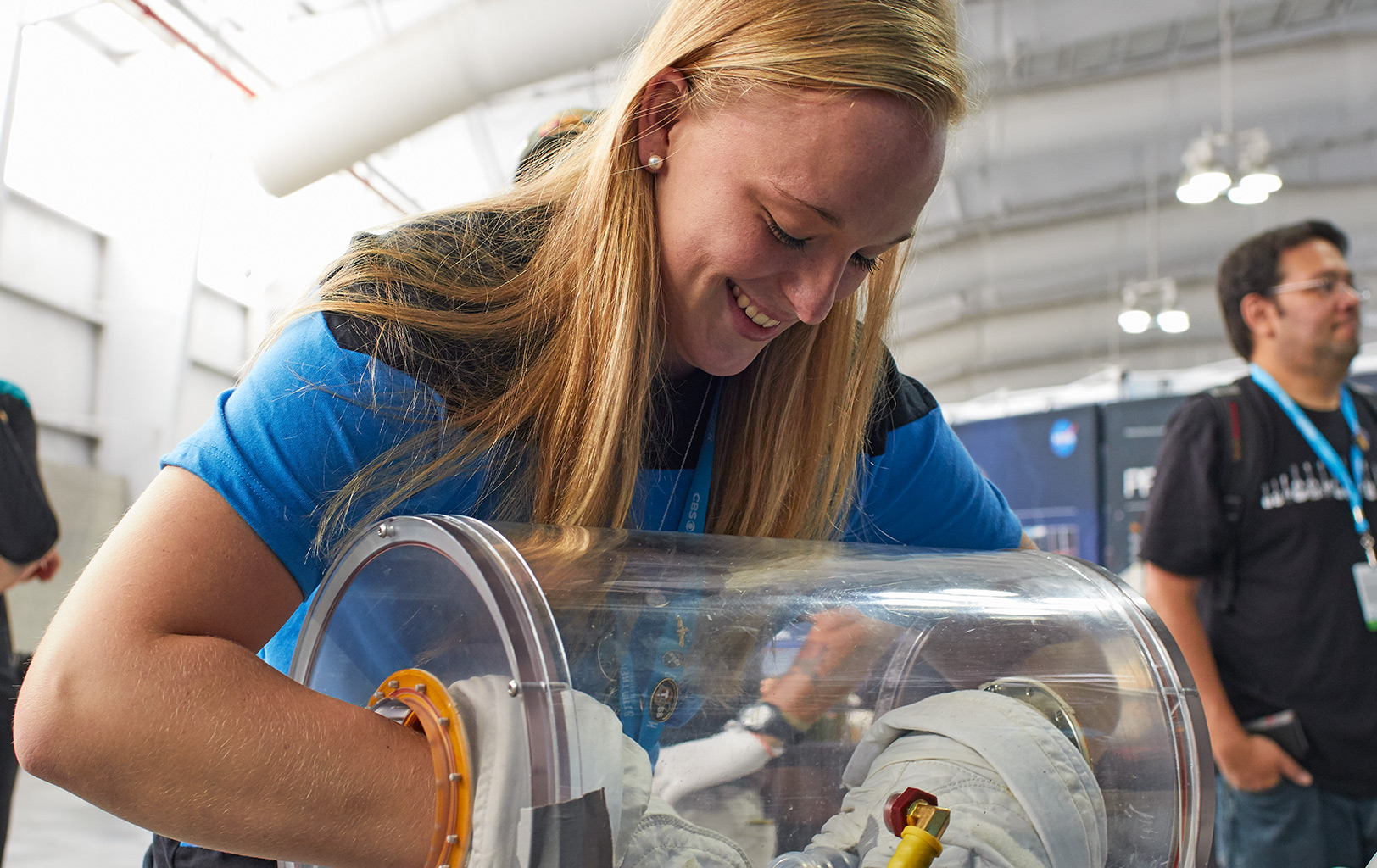'Olympus' the 4-legged robot could help astronauts explore Mars someday (video)
The robot is making leaps toward the future of planetary exploration.
A four-legged robot tested under simulated Martian gravity jumps from wall to wall in a new video, demonstrating how future explorers could navigate terrain too challenging for today's rovers.
Designed for use in low-gravity environments like on the moon and Mars, the four-legged robot, named Olympus, uses "double" limbs with jointed knees and paw-like feet for agile movement. At the European Space Agency's (ESA) Orbital Robotics Interactive Test (ORBIT) facility in the Netherlands, the robot recently showcased its ability to stabilize, jump and reorient itself under simulated microgravity conditions.
In reduced gravity, like that of Mars, which is about 38% of Earth’s, the robot's jumping ability could be a powerful advantage, enabling it to vault over obstacles that would stop traditional wheeled rovers in their tracks. Robots like Olympus could also access underground features such as lava tubes or caverns, which are too risky for drones or flying probes to explore, Jørgen Anker Olsen, who developed and built the robot, explained in a statement from ESA.

During the tests, Olympus was mounted upside-down on one of ORBIT's floating platforms, which glides on a thin cushion of air across an ultra-flat floor without any friction, reproducing a state of weightless free-floating in two dimensions, similar to how pucks float on an air hockey table. This allowed the team to test the robot's full range of leg motion.
Using reinforcement learning — a trial-and-error-based machine learning technique — Olympus taught itself to control its orientation autonomously as the platform rotated. The video from ESA shows that the robot used swimming-like motions to right itself and successfully perform a series of wall-to-wall jumps, consistently landing on all four feet.
Olsen, a visiting Ph.D. researcher from the Norwegian University of Science and Technology, developed Olympus to explore the potential of legged robots in space exploration. The technology demonstration suggests that robots like Olympus could transform how we navigate the rugged, unpredictable landscapes of other worlds — and enable future missions to leap into places that are currently beyond the reach of traditional robotic explorers.
Breaking space news, the latest updates on rocket launches, skywatching events and more!

Samantha Mathewson joined Space.com as an intern in the summer of 2016. She received a B.A. in Journalism and Environmental Science at the University of New Haven, in Connecticut. Previously, her work has been published in Nature World News. When not writing or reading about science, Samantha enjoys traveling to new places and taking photos! You can follow her on Twitter @Sam_Ashley13.
You must confirm your public display name before commenting
Please logout and then login again, you will then be prompted to enter your display name.
